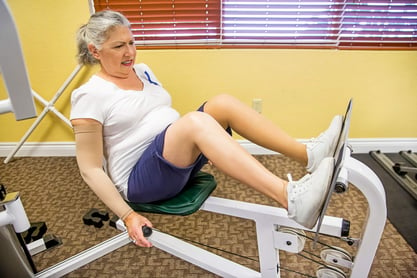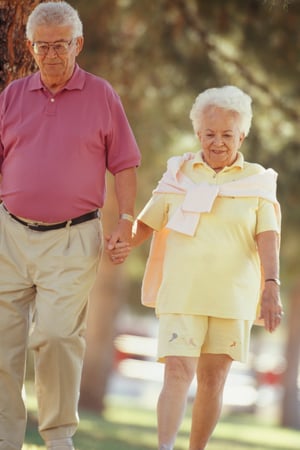 We’ve all heard that staying active as we get older is important, but let's really dig into the key players: what exactly can help prevent hospital visits due to common injuries like osteoporosis-related fractures?
We’ve all heard that staying active as we get older is important, but let's really dig into the key players: what exactly can help prevent hospital visits due to common injuries like osteoporosis-related fractures?
Here's a startling fact from the CDC... every year, more than 300,000 people aged 65 and above end up in the hospital because of hip fractures. Recovery from these fractures can take what feels like ages and often has a negative effect on your independence. Approximately 30-40% of patients resume their prior activity levels.
Now, before you shrug and think, "Okay, that's unfortunate, but it doesn't affect me," let's focus on osteoporosis and its risks. This condition weakens bones, making them fragile and prone to fractures without you even realizing it's happening. It's often referred to as a "silent disease" because it creeps up without symptoms until - boom - you've got a fracture, usually in your hips, spine, or wrists. So, if you're aging (aren't we all?), you're at risk.
But here is the good news: there are some simple exercises that can help prevent the worst of osteoporosis.
Take the leg press, for example. It's a pretty common strength training exercise where you push weight away with your legs against some resistance. The leg press helps to stimulate cells that build bones and boosts bone density.
It is important that you learn proper technique so be sure to reach out to your Fitness Center staff for help. Your Fitness Center staff will teach you proper techniques, frequency, and intensity of exercises, ensuring safety and effectiveness.
Weight-bearing exercises like the leg press don't just help your bones - they also increase muscle strength. Increasing muscular strength also reduces your risk of falling which reduces your risk of fractures. They're like your body's personal bodyguards for your bones, reducing the chances of falls or fractures.
The bottom line is this: weight-bearing exercises, like the leg press, are key when it comes to fighting off osteoporosis. Regularly getting into these workouts can help strengthen your bones, increase your strength, and keep you healthier.


.jpg?width=501&name=GettyImages-1138813719%20(1).jpg) If you’re looking to improve the overall happiness and well-being of your residents—and even yourself—try taking your offerings outside of the fitness center and straight into nature!
If you’re looking to improve the overall happiness and well-being of your residents—and even yourself—try taking your offerings outside of the fitness center and straight into nature!
.jpg?width=378&name=Senior%20dancing%20GettyImages-504735537%20(1).jpg)

 How healthy are your bones? This may not be a question you can answer quickly. Many seniors already have weak bones and don’t know it, but the good news is you’re never too old to take steps towards keeping your bones strong. Strong bones support us and allow us to move well. They protect our heart, lungs, and brain from injury. Our bones are also a storehouse for vital minerals that we need to live.
How healthy are your bones? This may not be a question you can answer quickly. Many seniors already have weak bones and don’t know it, but the good news is you’re never too old to take steps towards keeping your bones strong. Strong bones support us and allow us to move well. They protect our heart, lungs, and brain from injury. Our bones are also a storehouse for vital minerals that we need to live.
 If you’ve spent time in a gym, you know “that guy,” the one who doesn’t work his lower body and just focuses on upper body. Lower-body strength training is just as important as upper-body. The largest muscles are located in the lower body. Working larger muscles tends to get your heart rate up higher and burns more calories. More important, the muscles in the lower body are used for everyday movements and help with balance and coordination.
If you’ve spent time in a gym, you know “that guy,” the one who doesn’t work his lower body and just focuses on upper body. Lower-body strength training is just as important as upper-body. The largest muscles are located in the lower body. Working larger muscles tends to get your heart rate up higher and burns more calories. More important, the muscles in the lower body are used for everyday movements and help with balance and coordination.